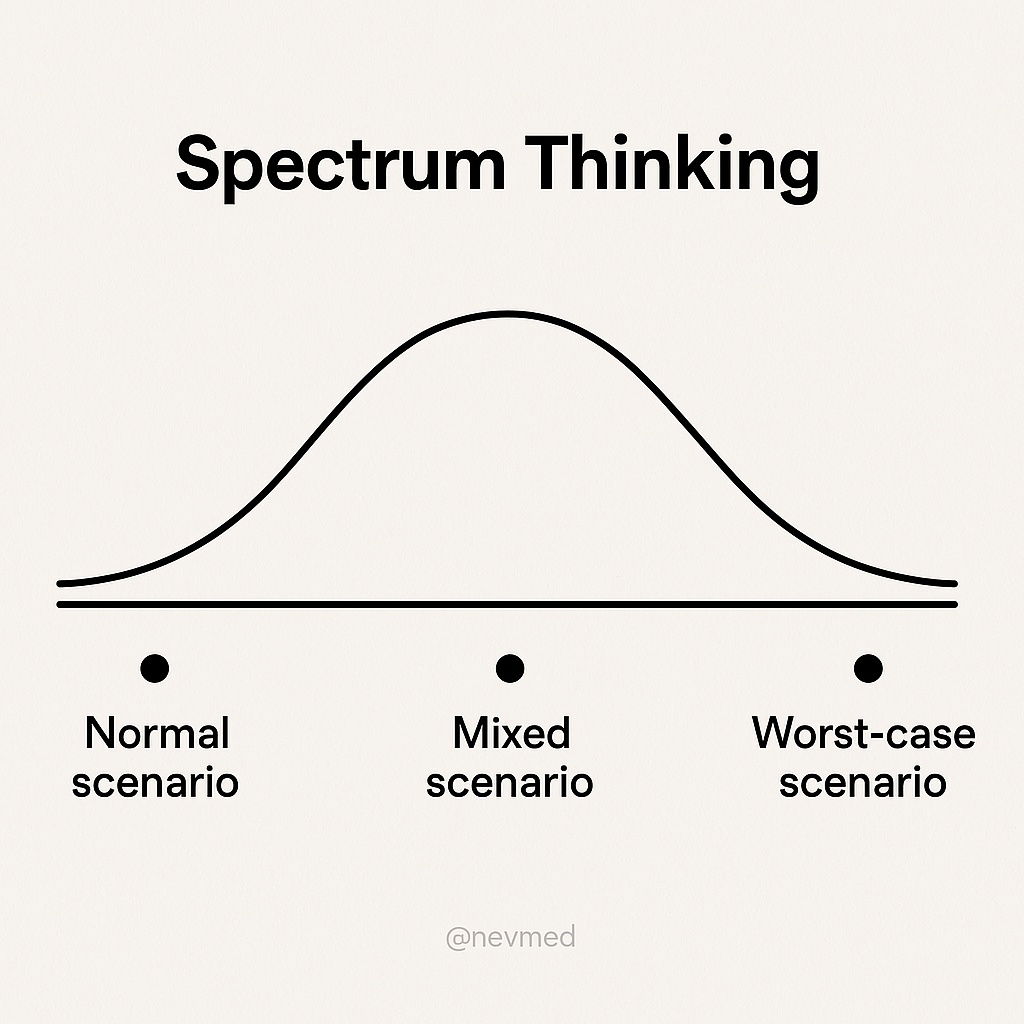
Ever get stuck thinking something’s either a total win or total flop? That’s black-and-white thinking. Smart marketers use spectrum thinking instead — like Peter Thiel does — by mapping out a few possible futures before making big bets.
Marketing Analysis
The image shows a simple bell curve: normal scenario, mixed scenario, and worst-case scenario. When evaluating campaign ideas, positioning, or offers, running through these three versions forces your brain to plan logically, not emotionally. It also helps you prepare talking points and contingencies for each likely outcome.
Why It Works
- Reduces risk by exploring multiple outcomes
- Helps you make more objective marketing decisions
- Builds resilience when results vary from expectations
- Turns uncertainty into an advantage
Examples
- Coca-Cola’s “New Coke” disaster led to brand loyalty rebound — a worst-case turned win.
- Netflix planned for DVD decline long before streaming dominance.
- Apple tests every scenario before product launches, avoiding flashy flops.
Analyzed by Swipebot
Loading analysis...